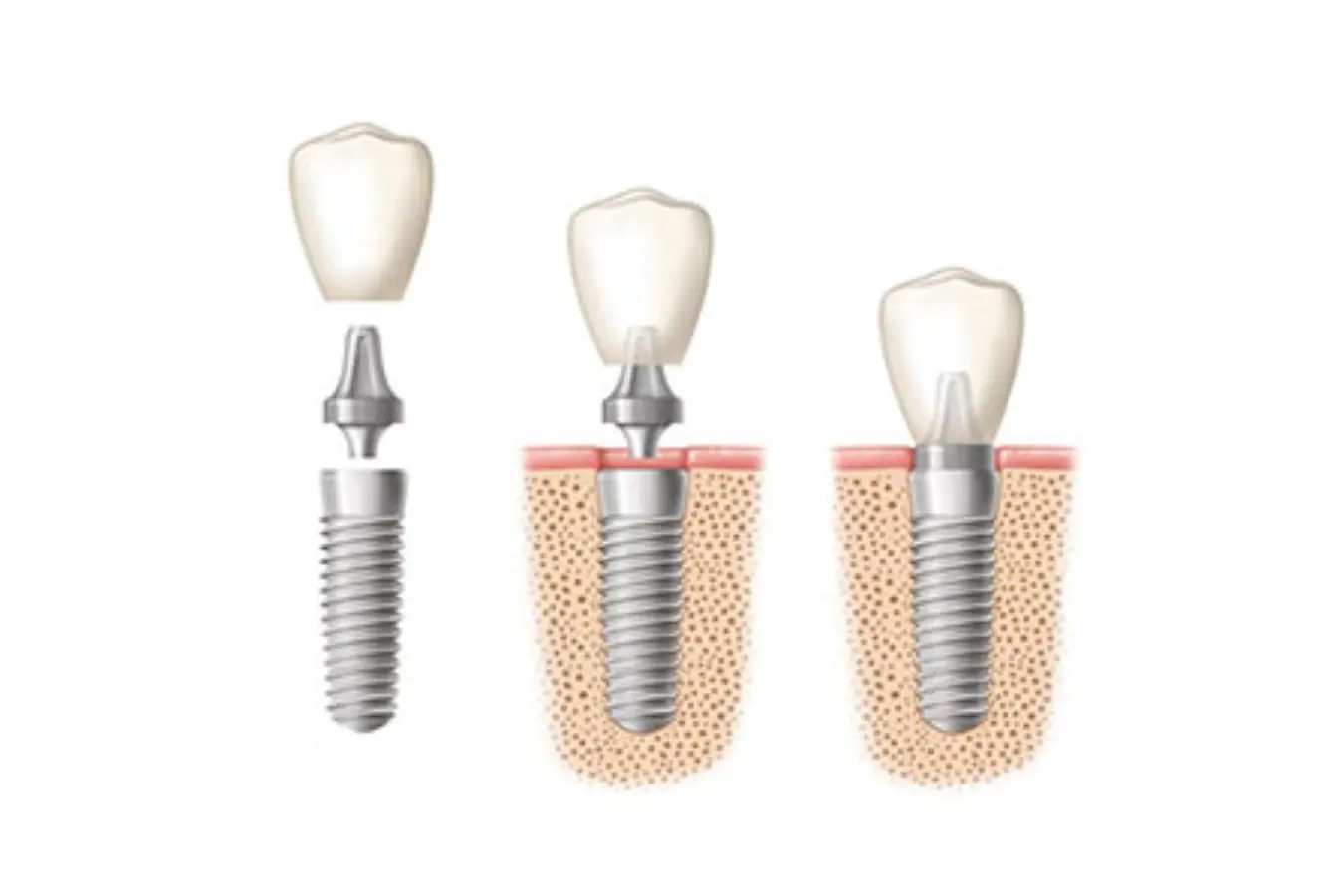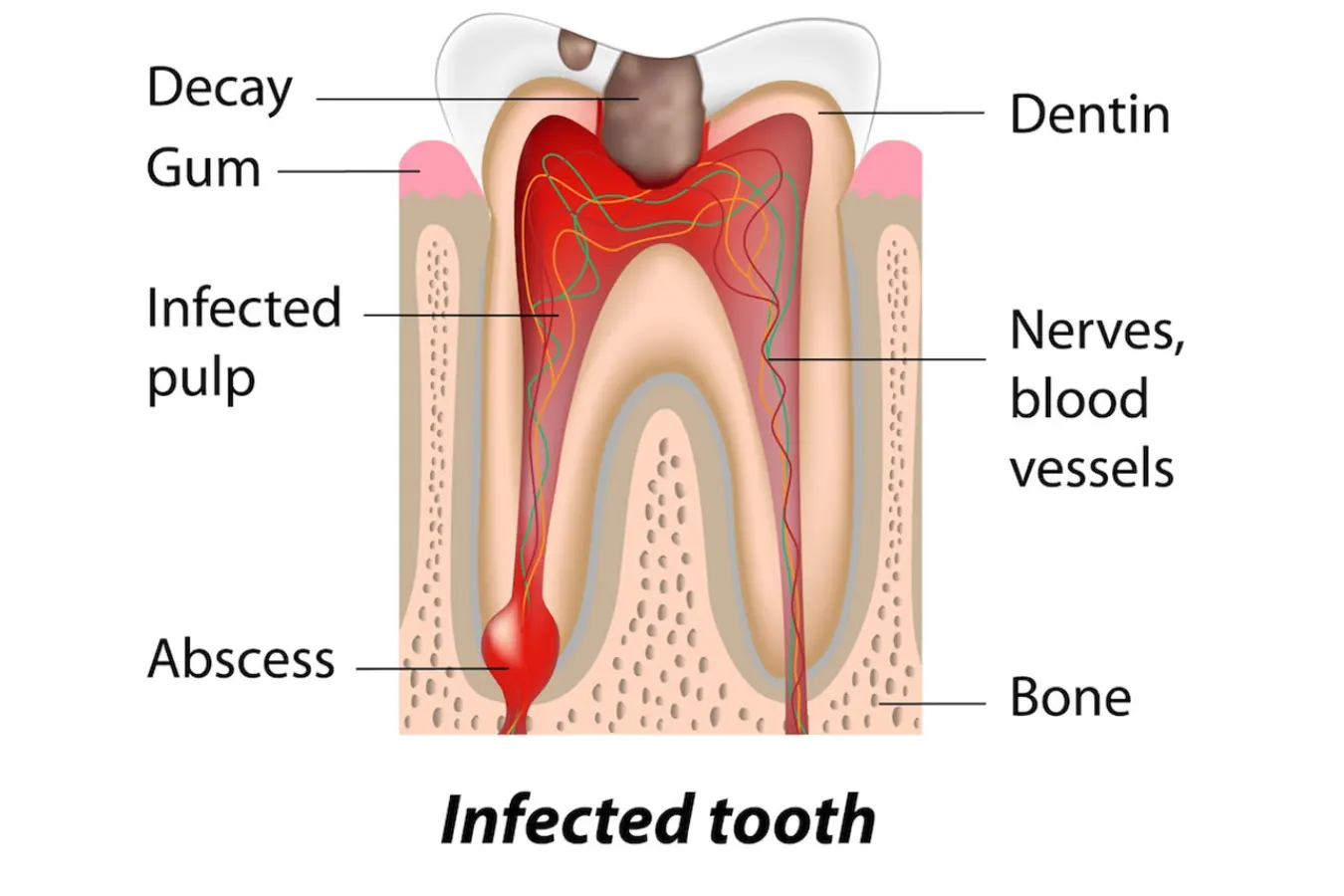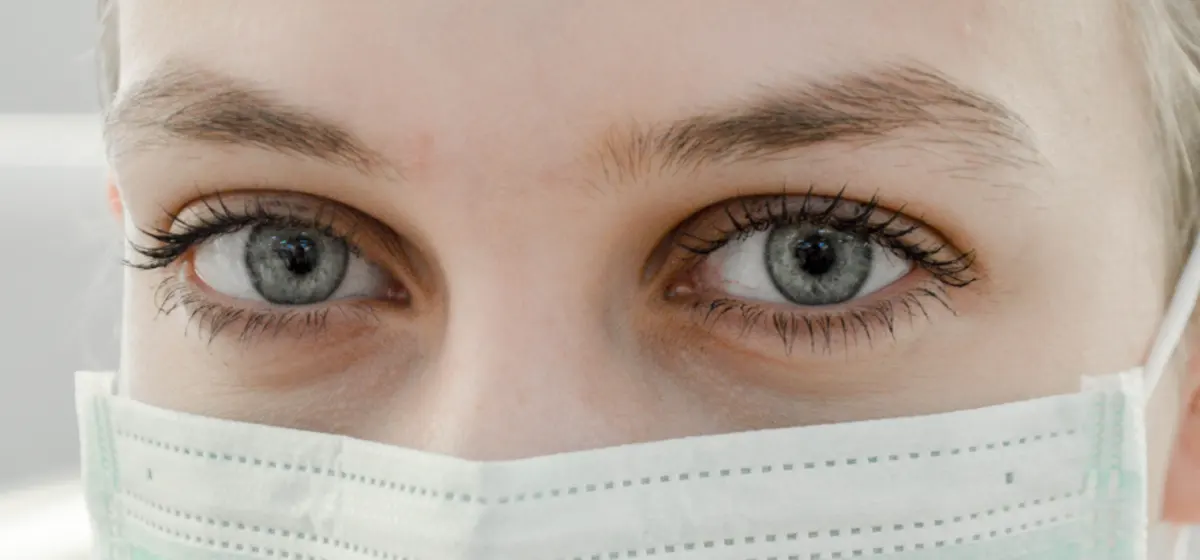Tooth Extraction
Before removing a tooth, you will receive you a local anesthetic to numb the area where the tooth will be removed. A general anesthetic may be used, especially if several, or your wisdom teeth will be removed at the same time. A general anesthetic will put you to sleep throughout the entire procedure. Eating and drinking after midnight the day of your surgery, is not recommended. To remove a wisdom tooth, the gum tissue may be opened to remove any bone that may be covering the tooth. Sometimes the tooth may be cut into smaller pieces, to allow for an easier extraction. After the tooth is removed, you will probably need stitches. Some of the stitches, dissolve over time, but some need to be removed after a few days. You will be advised on the type of stitches used, and your next steps. Sometimes a folded cotton pad covering the wound, will help stop the bleeding.
Dental Implants
A dental implant is placed in the jawbone so that it can fuse with your natural bone and become a strong and sturdy foundation for replacement teeth. Implants can be used to replace an individual tooth or for an implant-supported bridge
or denture containing multiple teeth.
Dental implants are the closest you can get to healthy, natural teeth. They will allow you to confidently eat, smile, laugh, talk, play and enjoy all of your regular activities of everyday life without thinking about your teeth.
A cylindrical and/or tapered post, as a substitute for the tooth roots

Endodontic Treatments
Endodontic treatment, targets the inside of the tooth. Endodontic treatment is necessary when the pulp becomes inflamed or infected by a variety of causes: deep decay, repeated dental procedures on the tooth, faulty crowns, or a crack or chip in the tooth. In addition, trauma to a tooth may cause pulp damage, even if the tooth has no visible chips or cracks. If pulp inflammation or infection is left untreated, it can cause pain or lead to an abscess.
The pulp contains blood vessels, nerves and connective tissue, and helps to grow the root of your tooth during development. In a fully developed tooth, the tooth can survive without the pulp because the tooth continues to be nourished by the tissues surrounding it.

Frenectomy
A frenum is a fold of tissue or muscle that connects the lips, cheek or tongue to the jawbone. The band of tissue connecting the tongue to the floor of the mouth is called the lingual frenum, while the band connecting the lip to the gum in front of the teeth is called the labial frenum. A frenectomy is a procedure to remove one of these folds of tissue. An unusually thick, large or tight lingual frenum can seriously constrict the movement of the tongue, and it is in fact, the source of the metaphorical
phrase. The lingual frenum may also pull so strongly on the middle of the tongue that the tongue acquires a heart shape.
An unusually short range of tongue extension may indicate the need for a lingual frenectomy.
Cyst removal
An oral cyst is generally filled with liquid, and can form anywhere in the mouth, including the bones, lips, tongue, throat,
or salivary glands. These are generally painless unless infected when it becomes red, swollen and painful. The most common kinds of oral cysts are periapical cysts, caused by infections in the pulp of the tooth, and dentigerous cysts, usually formed by impacted wisdom teeth. While these are benign, their removal it is generally recommended, to prevent the cyst from spreading and damaging nearby bones or teeth. The removal can usually be done in an office with local anesthesia, though a large cyst may require more extensive surgery, to reconstruct any bone which has been displaced or damaged.
